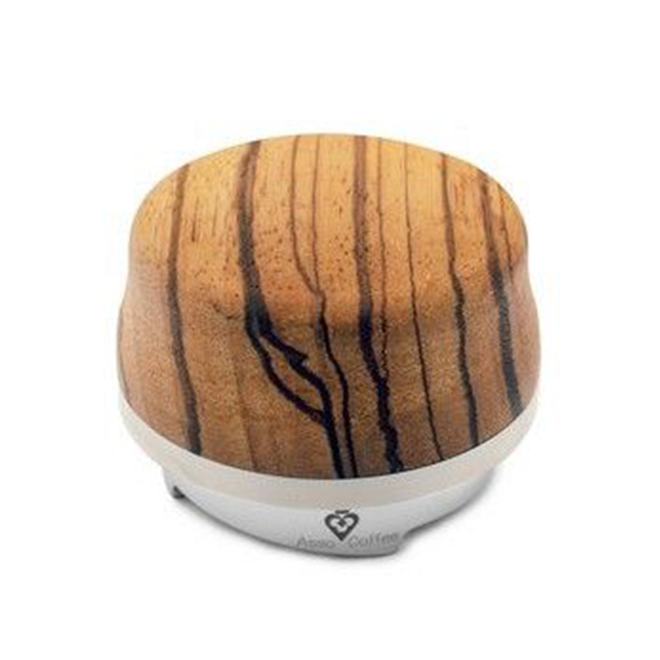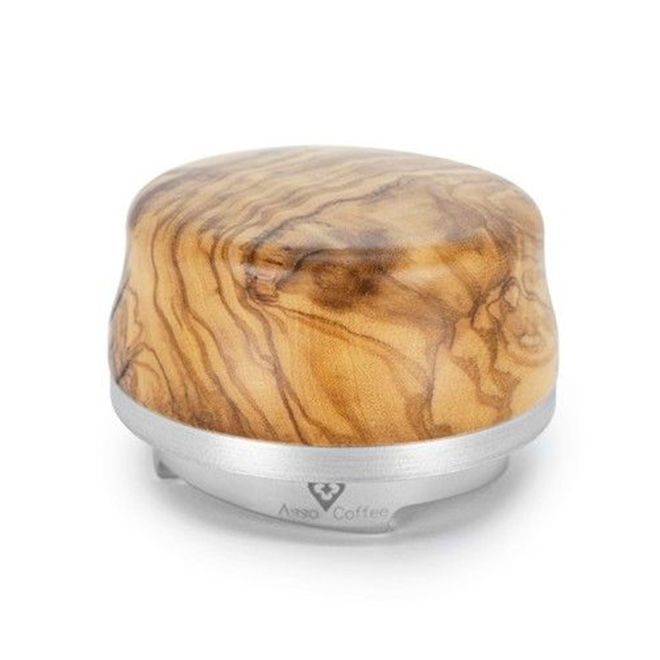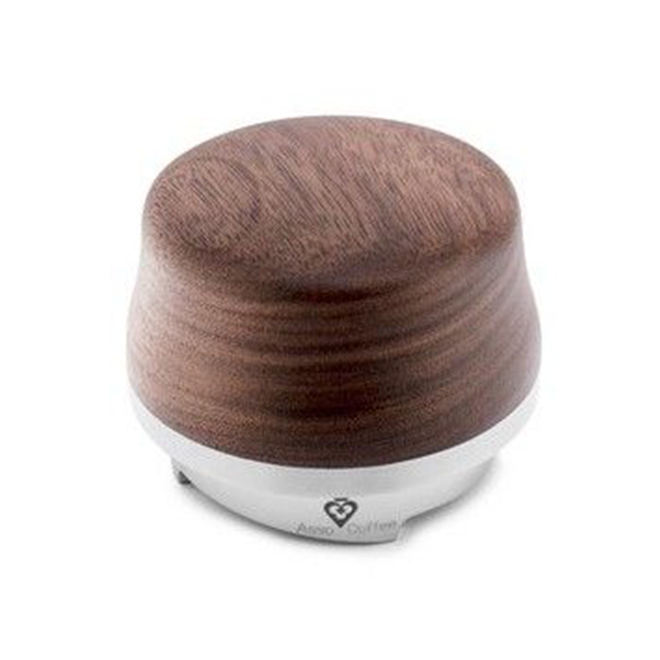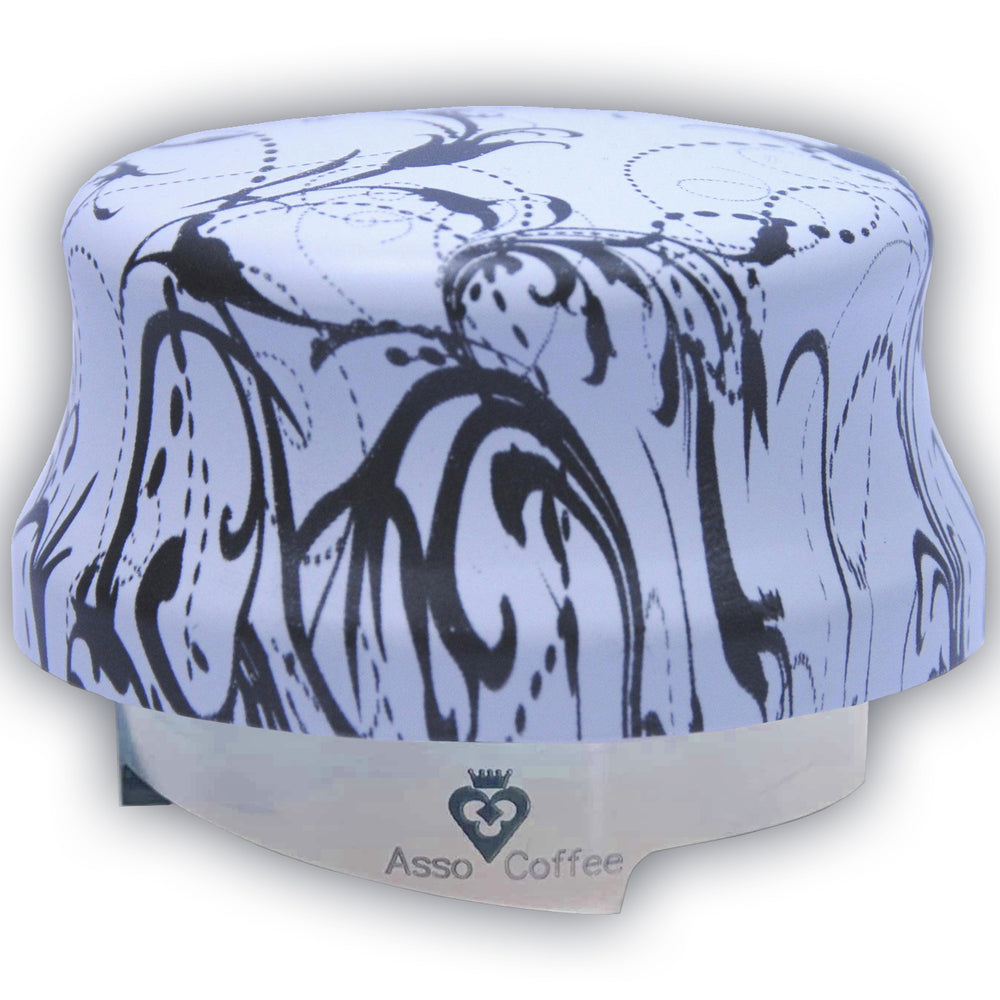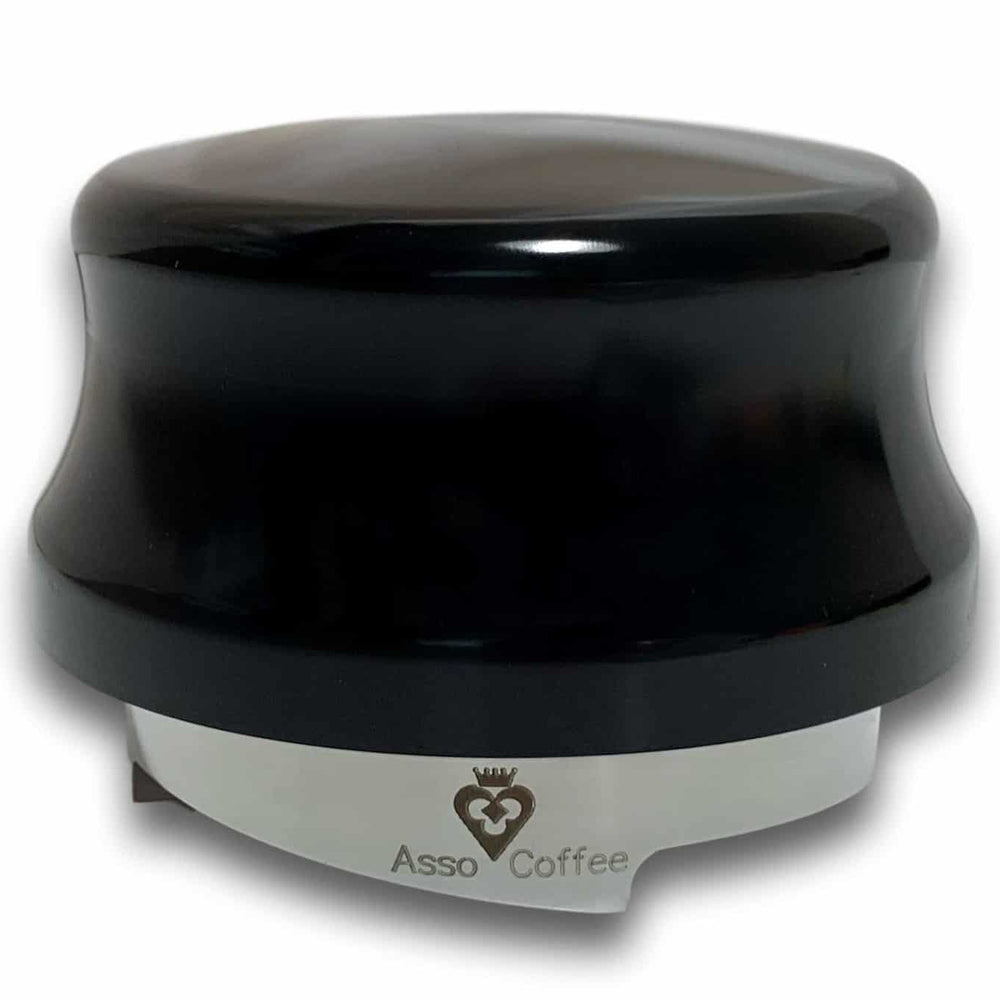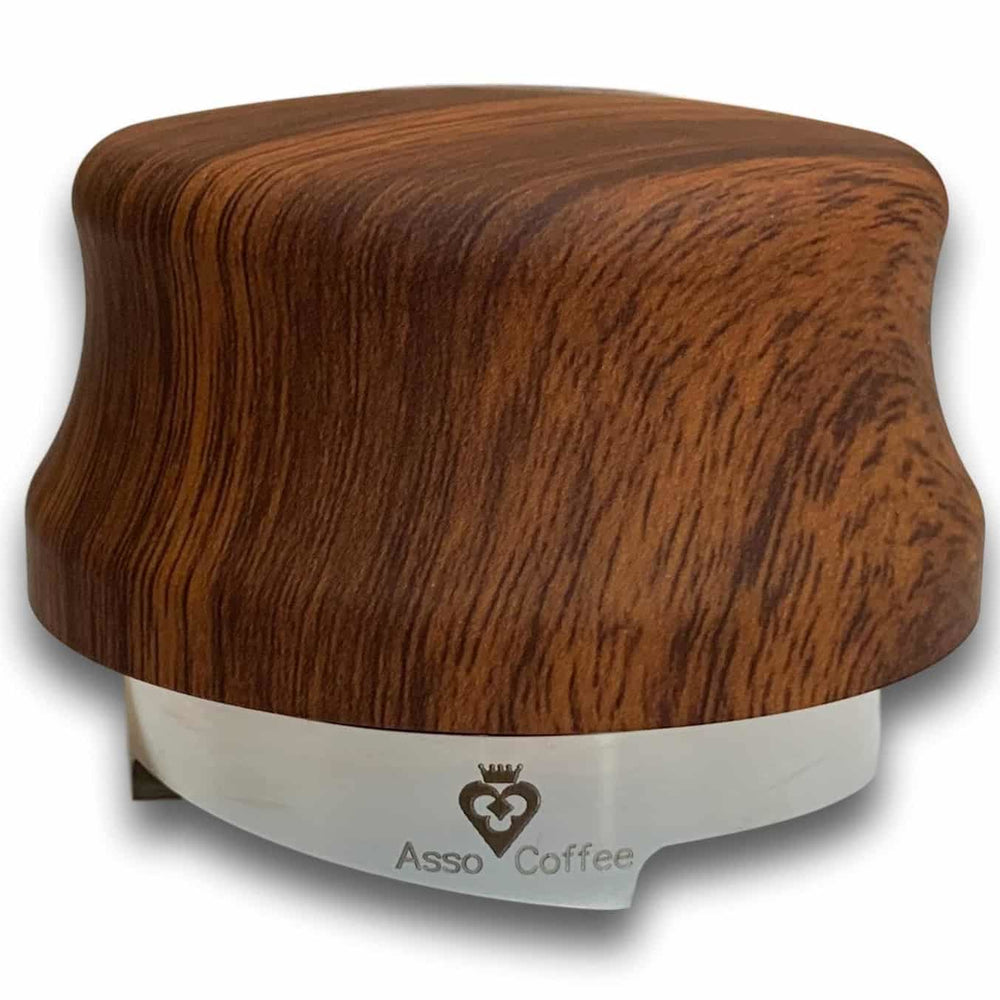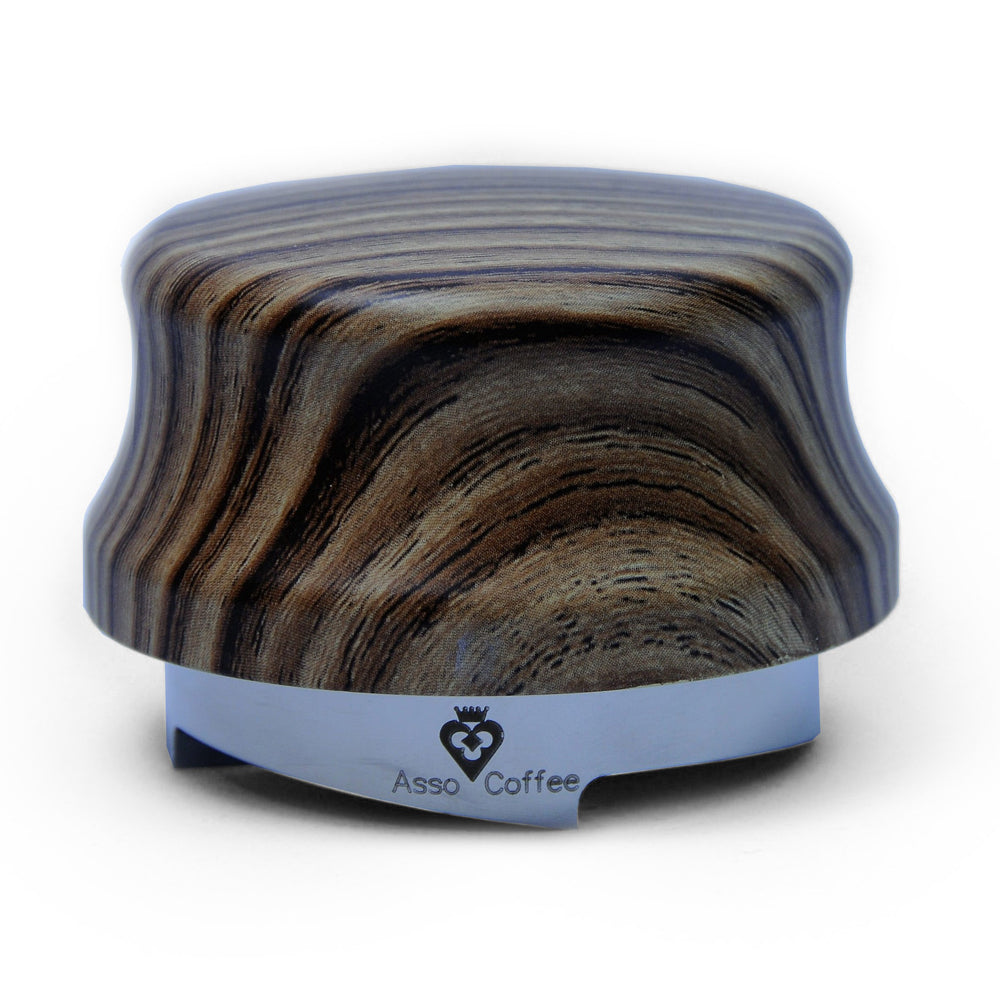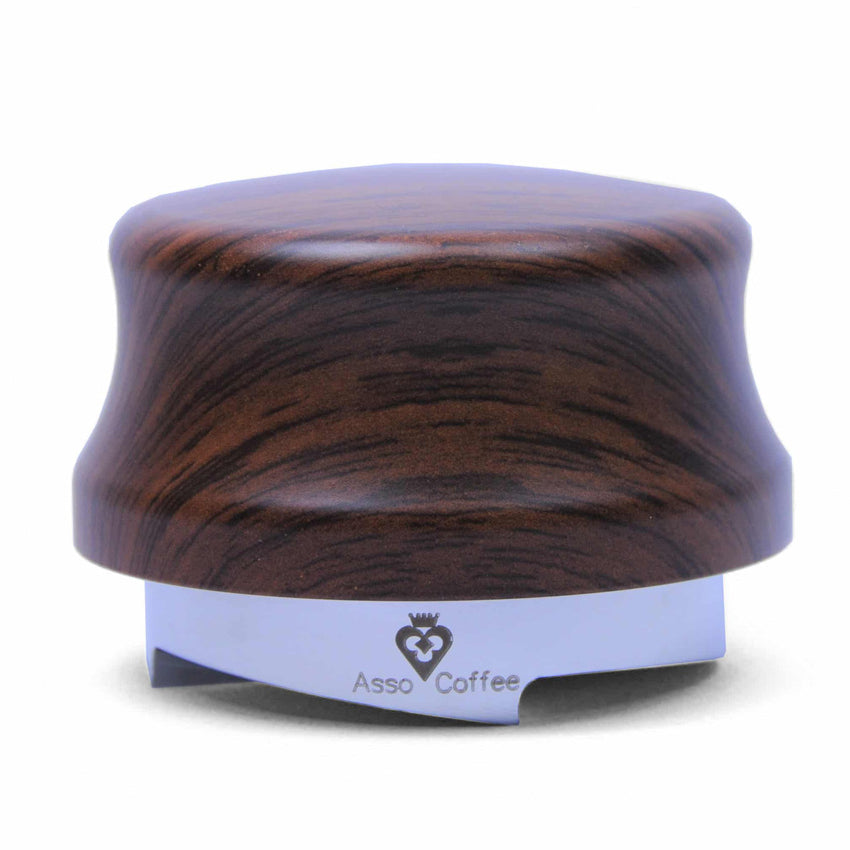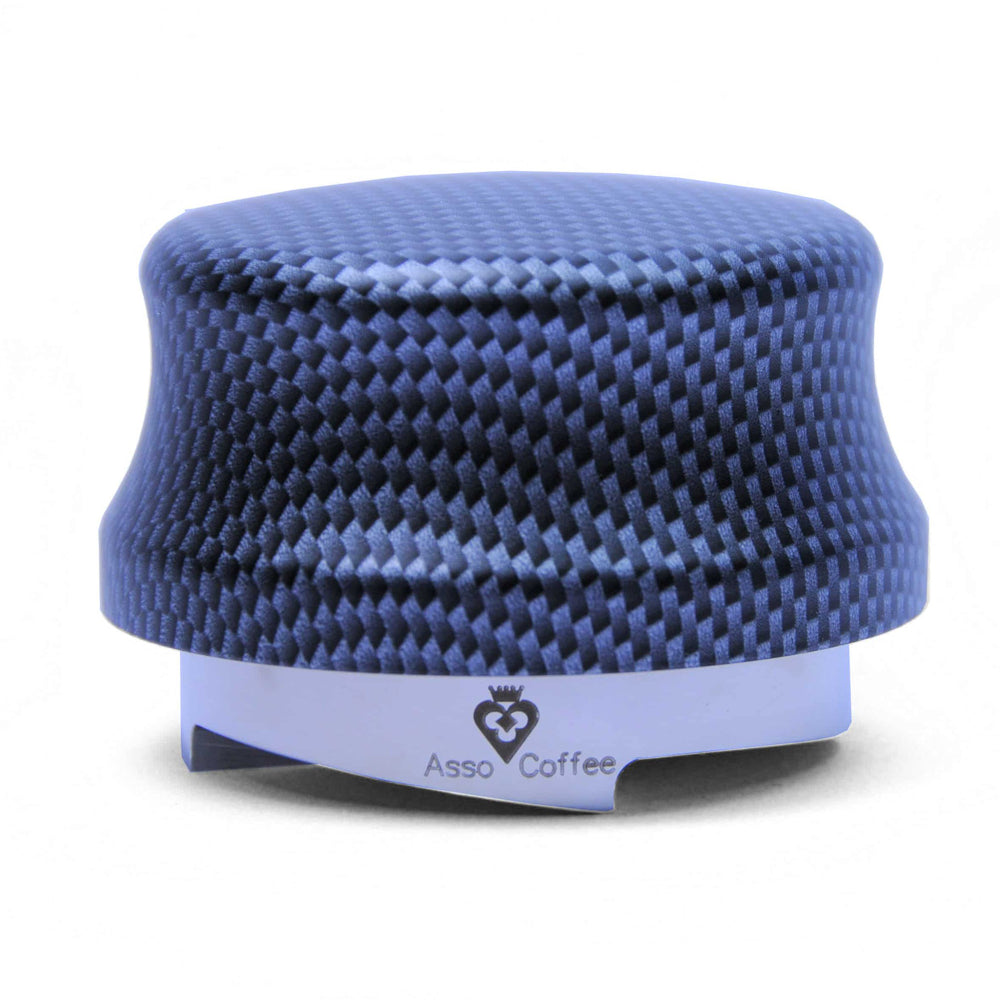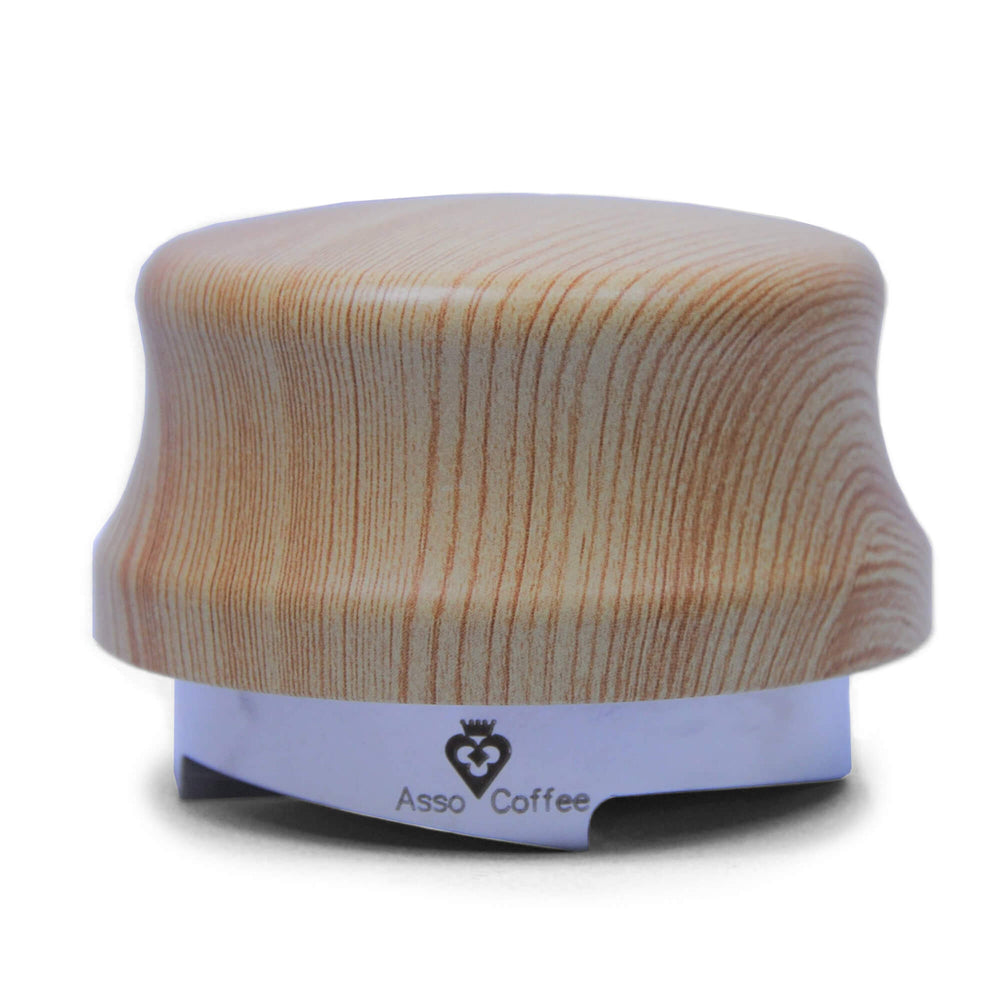Now that the Jack from Asso Coffee is here, you'll never use a tamper again. So what exactly is the Jack? The Jack is a distribution and tamping tool that's shaping up to be an essential piece for any serious espresso setup, with the potential to entirely replace your tamper — and now coming in real wood. In this post, we'll be getting into what an espresso tamper is, the details to show you what the Jack does, and what it can offer your setup at home.
What is an Espresso Tamper?
An espresso tamper, also known as a coffee tamper, is a small tool that applies an appropriate amount of pressure to your coffee grounds while in the portafilter. The tamper compacts your coffee grounds into a puck so that when you pull your shot, the water pressure builds up and creates a thick, smooth and crema-rich shot of espresso.

Cleaning Portafilter and Baskets
There’s a wide range of tampers from entry-level plastic tampers to high-end stainless steel ones—whatever you have on hand, your tamper must be able to tamp the ground coffee evenly with the right amount of pressure to create a good quality espresso. This is why tamping is such an important step in the process, however for many baristas, applying the same amount of pressure every single time can get confusing and inconsistent, resulting in espresso that varies in flavor and consistency during extraction.
What is the Jack Leveler?
With that in mind, let's get into what the Jack is and what it does. More than anything, the Jack is a leveler—a distribution tool that you sit in your portafilter and spin to create an even, level surface on your puck of ground coffee. In any other case, the job of a distribution tool ends there, having groomed your coffee for a well-performed tamp. However, in the case of the Jack, the adjustable depth of the mechanism is accurate to the millimeter and can be used to compact the grounds in your portafilter as you spin the blades. Put differently, the Jack effectively tamps your coffee.
And it does a very good job of it.
-
Please Note: This Leveler is Made of real Zebra Wood. Colors and Patterns May Vary Add some distinctive flair to your coffee routine with Asso Coffee's Wood Handle Ja...
-
Please Note: This Leveler is Made of real Olive Wood. Colors and Patterns May Vary Add some distinctive flair to your coffee routine with Asso Coffee's Wood Handle Ja...
-
Please Note: This Leveler is Made of real Walnut Wood. Colors and Patterns May Vary Add some distinctive flair to your coffee routine with Asso Coffee's Wood Handle J...
-
Patterns May Vary Add a touch of elegance to your coffee routine with Asso Coffee's Elegance Jack Leveler. The Jack coffee leveler is a distribution tool used to groom...
-
The Asso Coffee Jack coffee leveler is a distribution tool used to groom the coffee in your portafilter quickly and easily. With the Jack, you can expect a much easier...
-
Please Note: This Leveler is Wood Colored and Not Made from Actual Wood. Colors and Patterns May Vary Asso Coffee's Jack Leveler in Dark Wood nicely complements any w...
-
Please Note: This Leveler is Wood Colored and Not Made from Actual Wood. Patterns May Vary Asso Coffee's Jack Leveler in Zebra Wood features soft wood coloring for a ...
-
Please Note: This Leveler is Wood Colored and Not Made from Actual Wood. Colors and Patterns May Vary Asso Coffee's Jack Leveler in Dark Wood nicely complements any w...
-
Asso Coffee's Jack Leveler in Carbon Silver is a modern and stylish addition to your coffee equipment. The Jack coffee leveler is a distribution tool used to groom the...
-
Please Note: This Leveler is Wood Colored and Not Made from Actual Wood. Colors and Patterns May Vary Add some distinctive flair to your coffee routine with Asso Coff...
Asso Coffee the Jack Leveler: Is it really an Espresso Tamper?
Yes! Of course, we understand this more or less flies in the face of traditional espresso preparation, so we have some explaining to do. First, we must accept that espresso is a changing thing. While it is a historied, even classic drink, the essential recipe of espresso is a thing in flux.
Take dose for example. The doses for single shots and double shots have only increased over the years. Double shots, for instance, started at a dose of around 12 grams, and now reach up to as much as 19 grams. The ways in which we can prepare an espresso, too, have grown more complex, taking into account ratios, yield, and total dissolved solids. Well, the same can be said of tamping.
For a long time, your espresso asked for a level tamp, applied evenly with 30 lbs of pressure. This rule has been bending recently, with baristas agreeing that, so long as your tamp is consistent, you can adjust other variables to create the same results as before. In essence, this means that a strong tamp isn't so necessary anymore. So a light tamp can, theoretically, pull the same shot as a much heavier tamp, assuming you know what you're doing. Now, let's apply that logic to our new favorite tool; the Jack.

Tamp Pressure and Good Espresso
How to Tamp Espresso with Asso Coffee the Jack Leveler
Determine what depth the Jack needs to be set to. You want to go as deep as possible. You'll know it's set too deep if you get binding or the outer edge of the Jack does not contact the top rim of the filter basket. You'll know it's too shallow if the coffee is not compressed fully. You can touch the surface of the coffee puck to get an idea of how solid it is after leveling. If it gives a lot, set the leveler deeper.

Pressurized vs Non-Pressurized Portafilter Baskets
With its snapping mechanism, the Jack is locked in place which means your distribution and tamp will not only be consistent, it will be the exact same every time. Grind your coffee into your portafilter, place the Jack in the basket, and spin over and over. The force and depth of the blades will push your coffee downward into the basket, pressing it into a puck and creating a level surface for an even extraction, all at the same time. Now, this won't be the same as your average 30 lbs tamp, so you may need to adjust your grinder to a finer setting than you're used to. With that said, we've been spoiled by the results. Here's why.

The Complete Guide to Coffee Grinders
No More Barista Wrist

The Asso Jack Leveler eliminates the need to press and tamp coffee, using its blades to gently compact it instead.
If you haven't heard of it, trust our experts and their aching wrists, it's a real thing. With repeated and forceful tamping, you can easily strain your wrist if you're not careful. This is something professional baristas deal with all the time due to the pressures of the job, and it's not hard to see how it could happen at home. This is where the Jack removes the pain and leaves the gain.
There's no pressing, packing, or pushing required. Just spin it and lock in that portafilter. You'll get good results while exerting virtually no effort. It's a subtle benefit of owning the Jack, but it's definitely the unsung hero in our book.
Consistent Results
This is where your money is. Unless you're a professional or you have years of experience, tamping is a more or less an unreliable task. We wouldn't say an ideal tamp is just about impossible, but it's certainly difficult, and the effect it can have on your shots is tremendous. With the Jack, you're getting a level tamp and even distribution every time, so you can concentrate all your focus on other variables like dose and grind size.

How To: Basic Espresso Technique - Dialing in Grind Size
Consistency is king when it comes to espresso, and it really clears the way for improved shots. Because of this consistency, you can expect to reduce channeling and wasted shots. Plus, if you're cautious and calculated with your tamping like some of us, the Jack will certainly speed up your preparation time with how quick and easy it is to use.

How to Pull Consistent Espresso Shots
We went back to our studio to ask Marc what he thought of the Jack. His opinion couldn't be more telling when he said, "I'm never using a tamper again." It's just about over for your tamper, but that's okay. You can sit your tamper next to your machine for decoration while the Jack gets the real work done, faster and more efficiently.
Similar Products
ECM Push Tamper
With the ECM’s Push Tamper, you can set your tamping depth by twisting the handle counterclockwise to prevent uneven grounds and over-tamping. Not to mention, setting your tamping depth will guarantee consistent tamps.
ECM Coffee Distributor
While the ECM Coffee Distributor does not eliminate the need for tamping, it does make a nice polished surface for you to tamp on. To polish your coffee and eliminate channeling, simply place the distributor on top of your freshly ground coffee in the portafilter and twist clockwise.
Bravo Distributor and Leveler
Much like the ECM Distributor, the Bravo Distributor & Leveler produces a polished surface for tamping all without heavily compressing your coffee. The Bravo Distributor and Leveler pairs well with the Bravo Tamper and eliminates the opportunity for channeling or an uneven extraction.
Bravo Tamper
If you're still loyal to tampers, may we suggest the Bravo Espresso Tamper? This tamper is designed with an internal spring and an external spring to ensure you’re applying consistent pressure between 26 - 34lbs.



